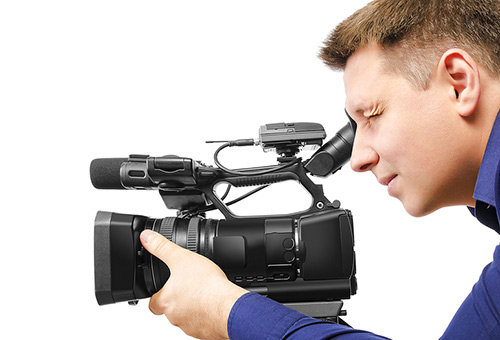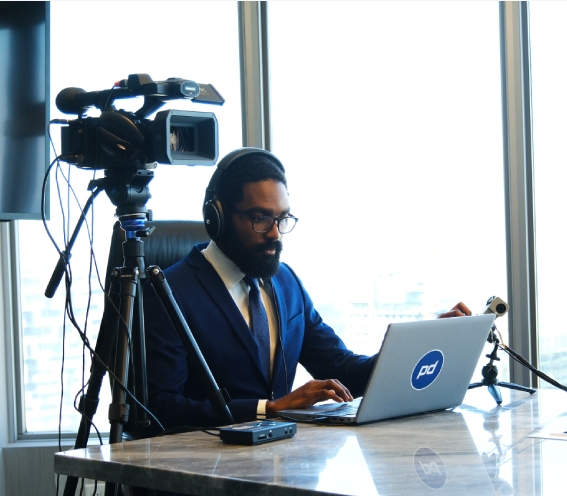Why Legal Videography is Becoming an Indispensable Tool for Attorneys
Why Legal Videography is Becoming an Indispensable Tool for Attorneys
Blog Article
Why Lawful Videography Is Essential for Accurate Court Recordings
The function of legal videography in courtroom setups can not be overstated, as it offers as a crucial device for protecting the integrity of court documents. The ramifications of integrating lawful videography into standard court practices elevate crucial questions concerning its wider impact on the lawful system.
Significance of Visual Proof
In the realm of lawful procedures, the significance of visual proof can not be overstated. Visual evidence serves as a powerful tool in establishing realities, affirming statements, and enhancing the general clarity of a situation. This sort of evidence, which consists of photographs, video clips, and diagrams, can supply a substantial context that verbal summaries frequently do not have, thereby providing courts and judges a clearer understanding of the scenarios bordering a case.
Additionally, aesthetic evidence aids in the retention of info. Human cognition is naturally aesthetic, and people are more probable to bear in mind and understand details offered in a visual layout. In the courtroom, this can be vital, as engaging aesthetic evidence can sway viewpoints and strengthen the story provided by lawful reps.
Additionally, the use of visual evidence can lessen misconceptions and obscurities that often arise from verbal exchanges. By offering a direct representation of events, visual evidence helps to eliminate subjective interpretations and fosters a more objective examination of the facts. The combination of visual evidence right into lawful procedures not only strengthens the honesty of the judicial procedure however also enhances the likelihood of attaining a simply result.
Catching Non-Verbal Cues
Making use of innovative videography methods can considerably boost the capture of non-verbal hints during lawful procedures. Non-verbal communication, consisting of face expressions, body language, and eye contact, plays a crucial duty in communicating emotions and intentions that might not be clearly specified in verbal testament. legal videography. Legal videography uses high-definition video cameras and strategic angles to ensure that these refined cues are tape-recorded with quality and accuracy
The capacity to evaluate non-verbal habits can provide valuable context to statements made during court sessions. For example, a witness's reluctance or self-confidence can be translated via their position or motions, possibly influencing the court's assumption of reputation. The use of close-up shots can assist concentrate on an audio speaker's expressions, allowing for a more nuanced understanding of the statement.
Moreover, incorporating multiple camera angles can produce a detailed sight of communications, highlighting characteristics in between events included. This multifaceted method not only improves the accuracy of the court record however likewise aids in protecting the stability of the judicial process - legal videography. Eventually, catching non-verbal hints through legal videography fosters a richer, more complete depiction of court room process

Enhancing Statement Reliability
The dependability of testimony can be substantially bolstered via making use of high-grade legal videography. Video clip recordings offer as an objective tool that records not only the talked words of witnesses yet also the subtleties of their distribution, including tone, pacing, and psychological expressiveness. This complex documentation supplies a more clear understanding of the witness's trustworthiness and why not check here purposes, which can be critical in legal process.
Moreover, legal videography lessens the possibility for misinterpretations that may develop from created transcripts alone. When jurors can observe a witness's attitude and body movement in combination with their testimony, they are better furnished to analyze the credibility and reliability of the evidence presented. This visual context can strengthen the testimonial narrative, making it a lot more engaging and reputable.
Additionally, the existence of a video recording can discourage prospective variances in statement. Witnesses may be a lot more mindful in their declarations when they know they are being tape-recorded, bring about more precise and truthful accounts. In general, top quality lawful videography enhances the integrity of testimony, making certain that the court has access to a complete and honest representation of the facts as conveyed by the witnesses.
Sustaining Appeals and Reviews
Lawful videography plays a crucial function in supporting allures and reviews by giving a thorough visual document of courtroom process. This visual paperwork records not only the talked words of witnesses and attorneys but additionally the subtleties of body language, tone of voice, and courtroom characteristics. Such aspects can be critical in recognizing the context of statements and debates provided.
In the appellate procedure, where the emphasis is on errors of law and procedural justness, a video clip record can act as an essential device for appellate courts. It makes it possible for courts to assess the original trial context, making certain that decisions are based on a total understanding of the process. The ability to visually analyze the demeanor of witnesses or the communications between parties can disclose understandings that written transcripts might ignore.

Additionally, legal videography can aid in clearing up ambiguities in statements or step-by-step rulings, consequently reinforcing the basis for an appeal. By offering a reliable, unbiased account of what transpired in court, legal videography not only supports the stability of the legal procedure but also empowers all parties entailed to make educated choices concerning their check here instances.
Improving Courtroom Processes
Enhancing court performance, legal videography simplifies procedures by supplying instant access to aesthetic records of procedures. This modern technology enables judges, attorneys, and juries to take another look at essential testimony and proof, ensuring that all events have a clear understanding of the case. By catching the nuances of verbal and non-verbal communication, videography improves the document, making it simpler to grasp the context and weight of testaments.

Furthermore, video clip recordings can promote remote engagement in hearings, enabling greater flexibility in scheduling and participation, which is particularly valuable in complex cases entailing numerous stakeholders.
Verdict
In verdict, lawful videography plays an essential duty in making certain exact court recordings by supplying necessary aesthetic evidence that records both spoken and non-verbal interaction. This method enhances the reliability of testaments, sustains appellate evaluations, and improves courtroom procedures. By cultivating a detailed understanding of courtroom characteristics, lawful videography eventually adds to extra fair judicial outcomes, enhancing the stability of the legal system and facilitating educated decision-making.
Report this page